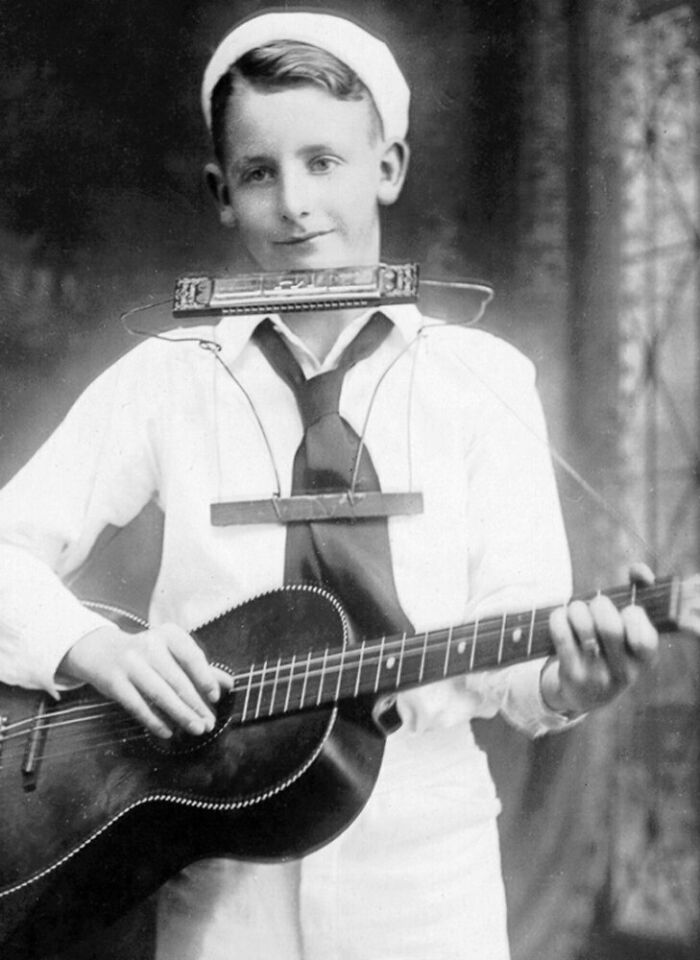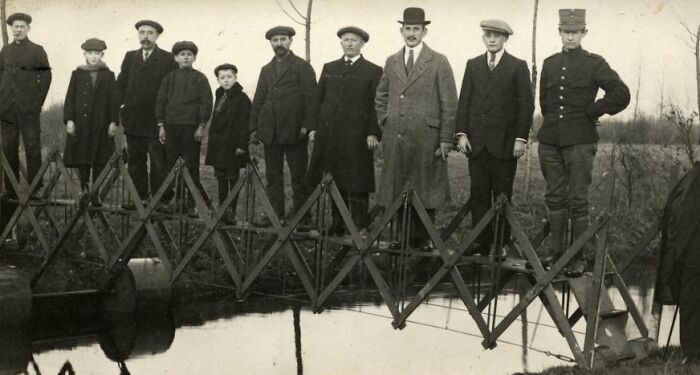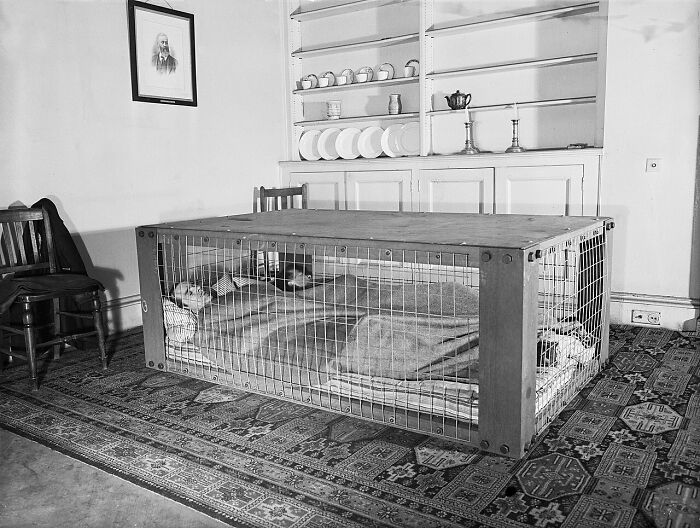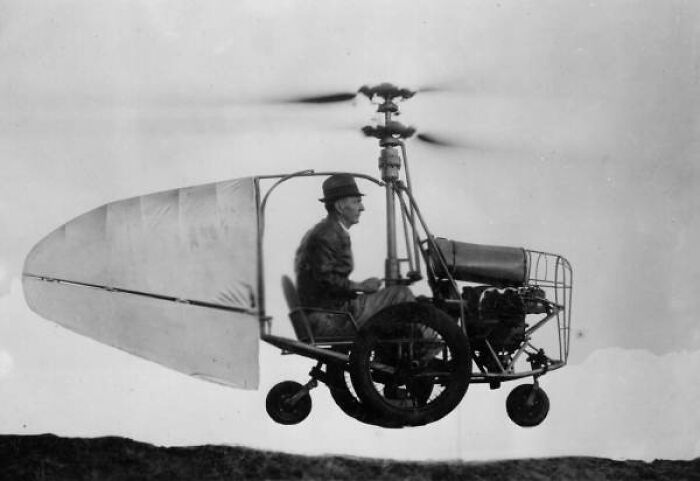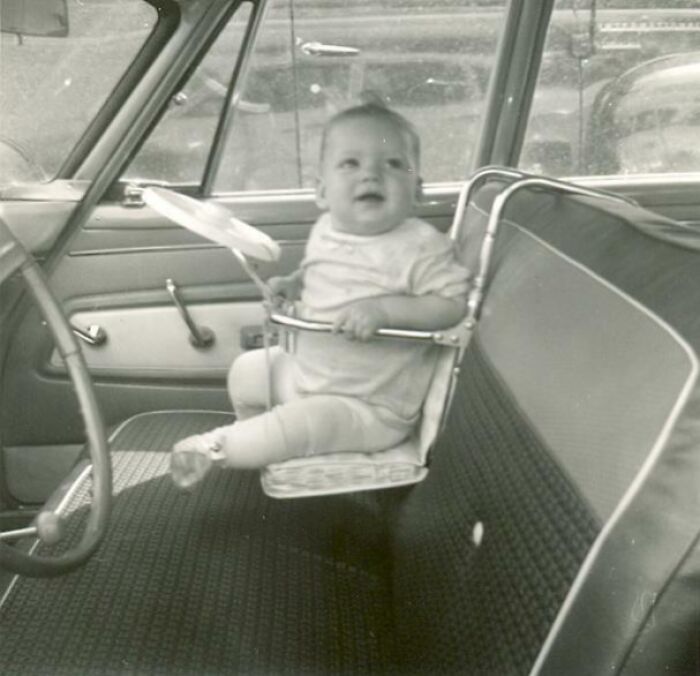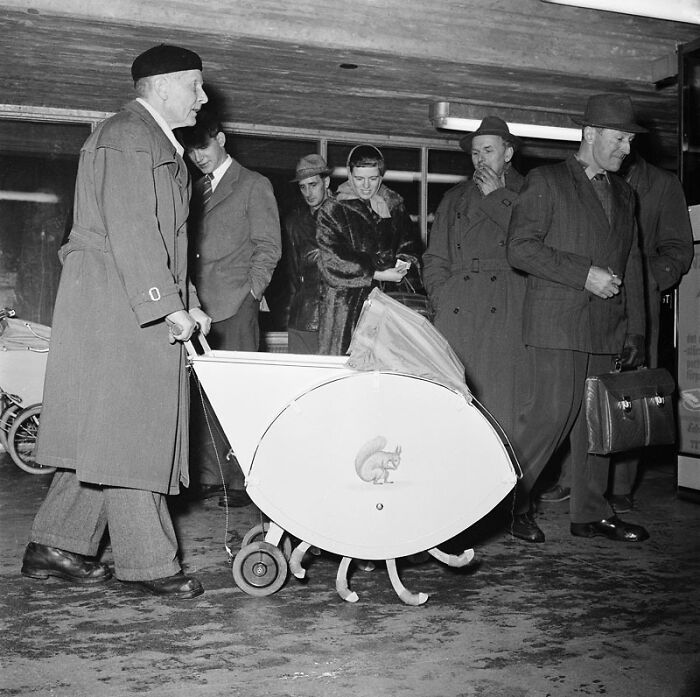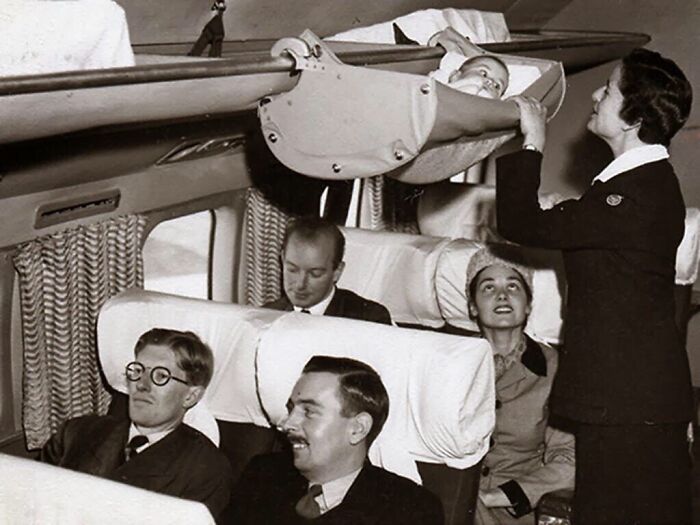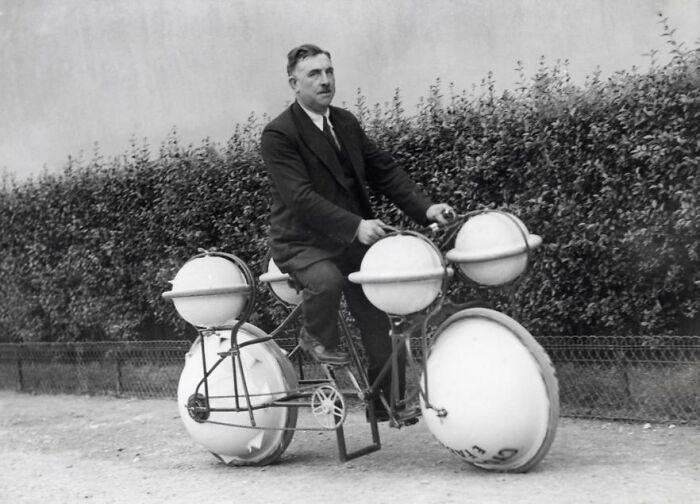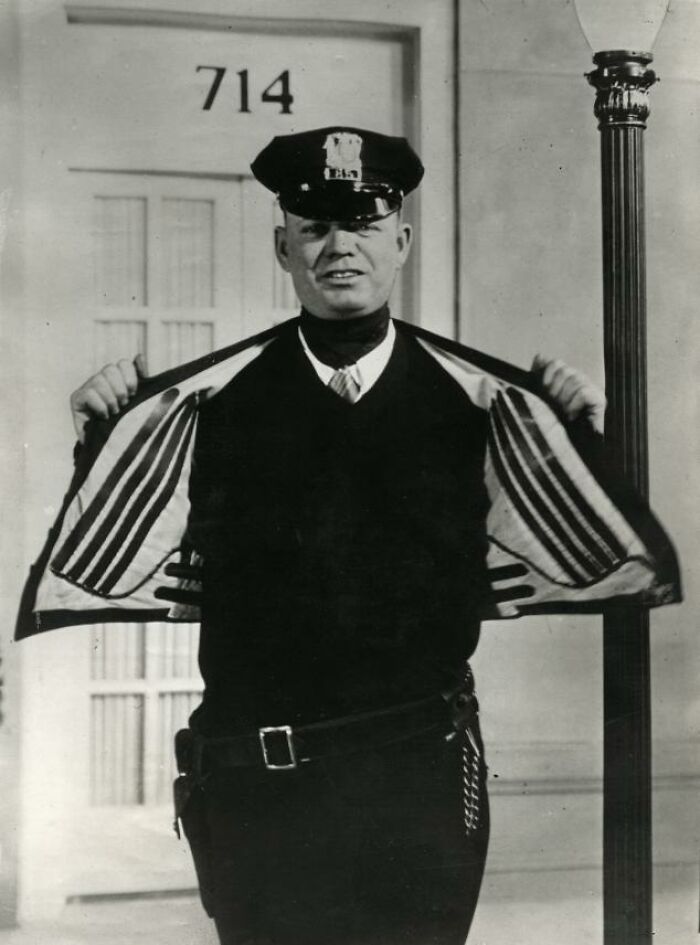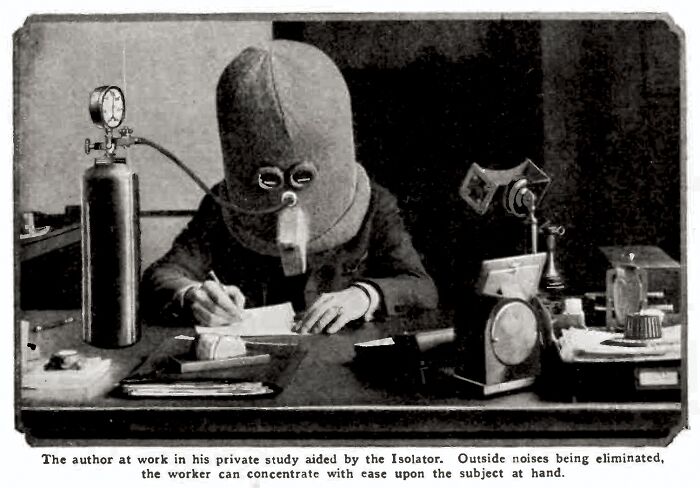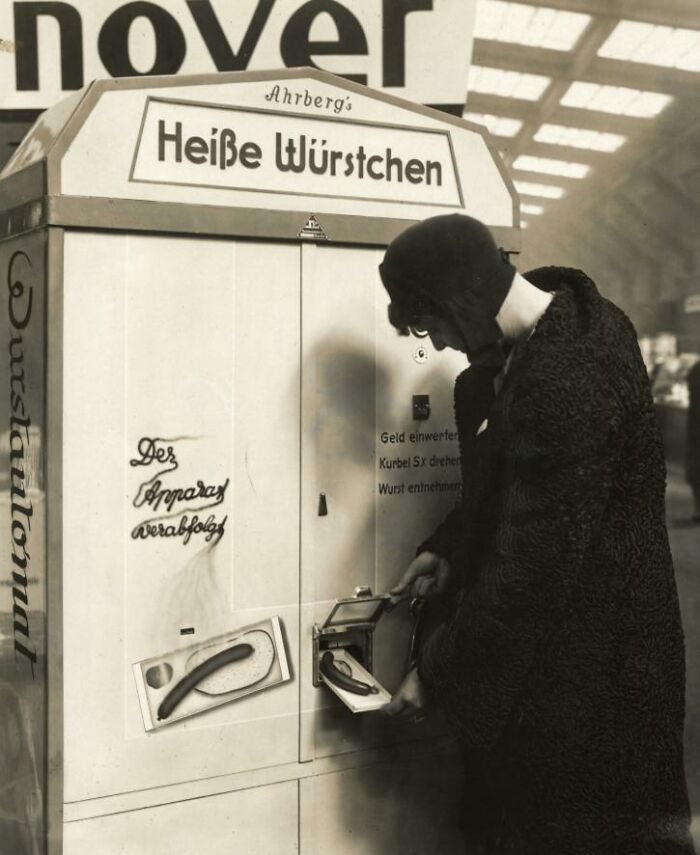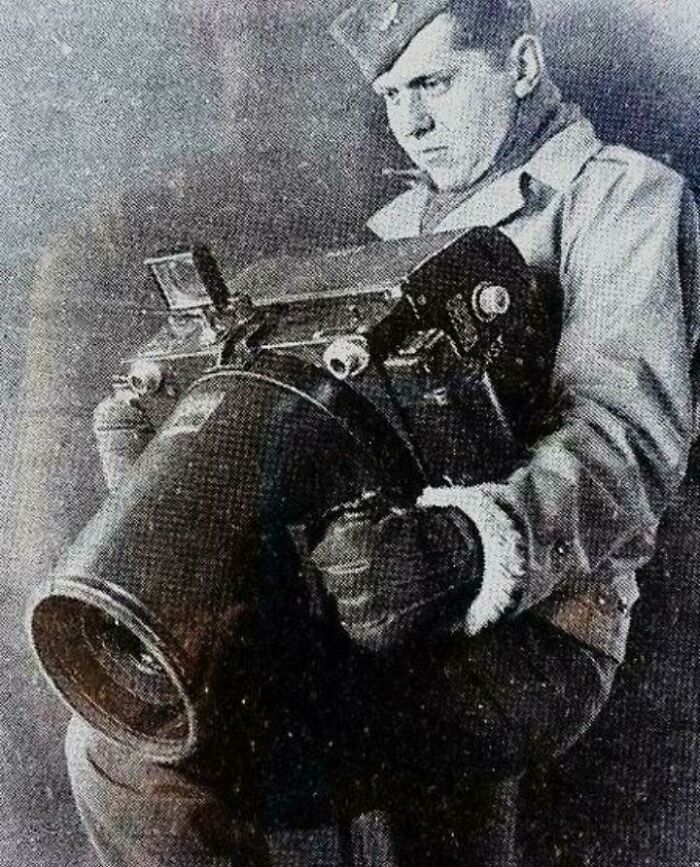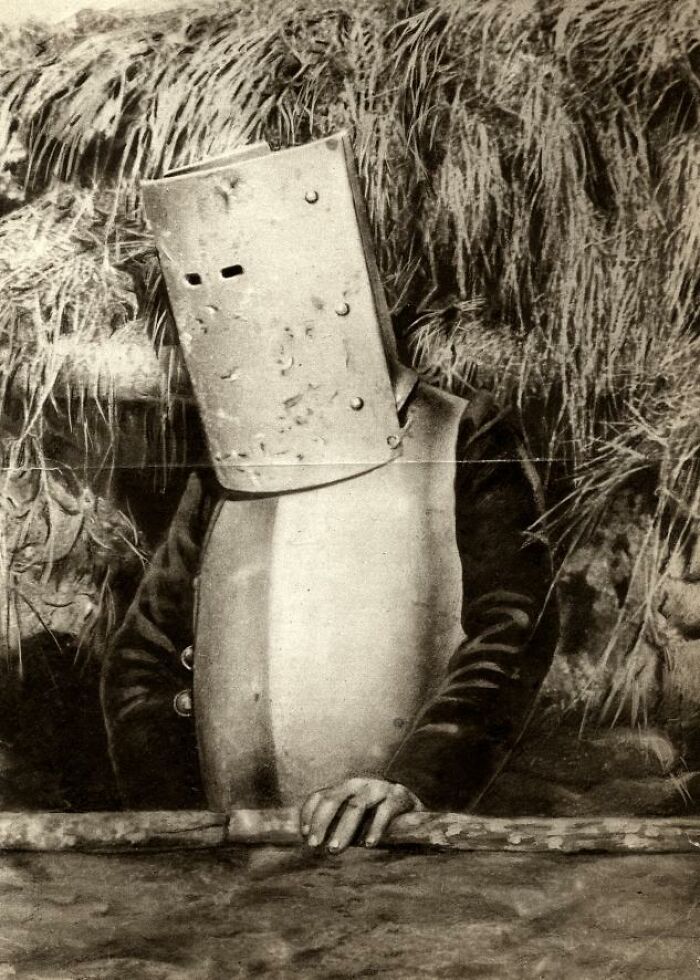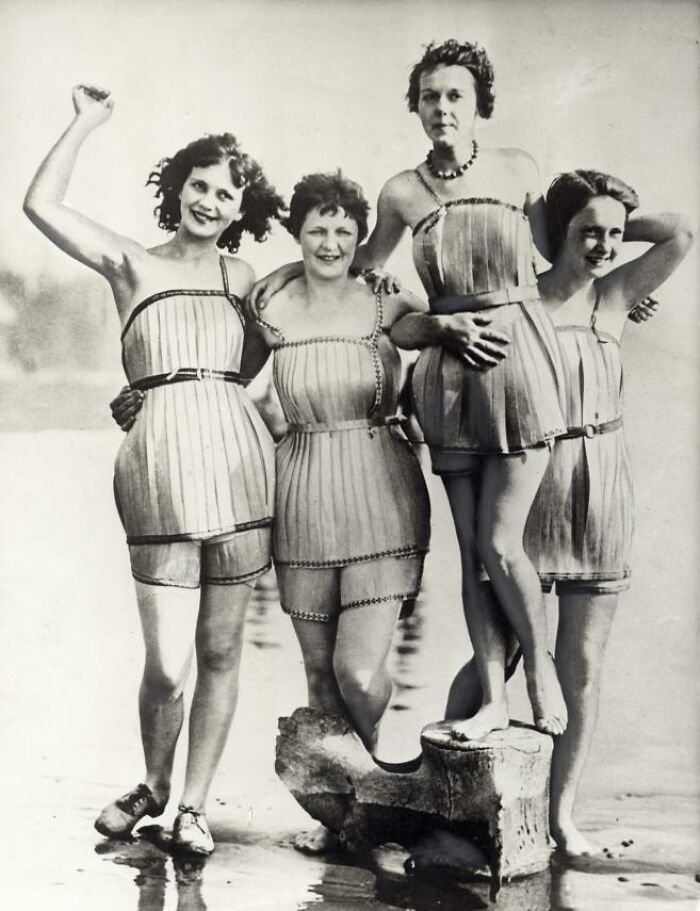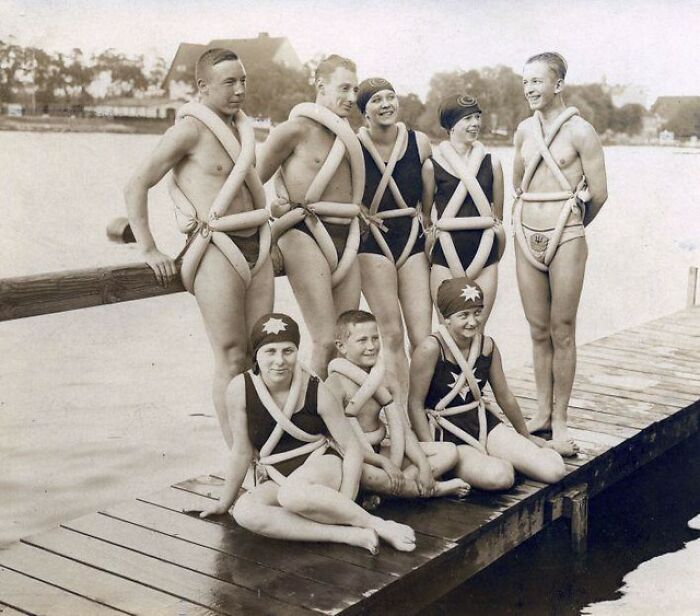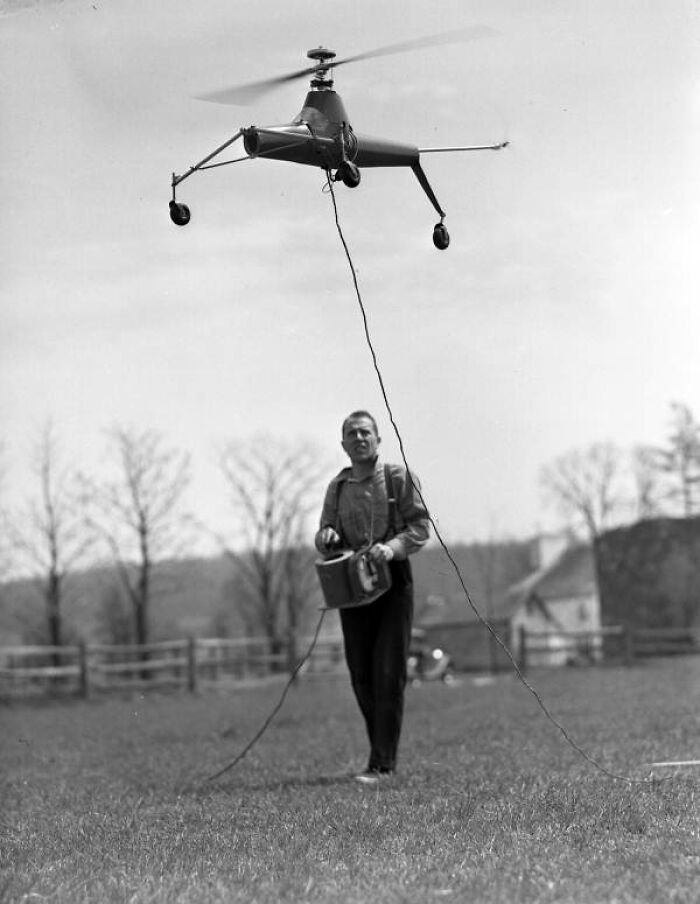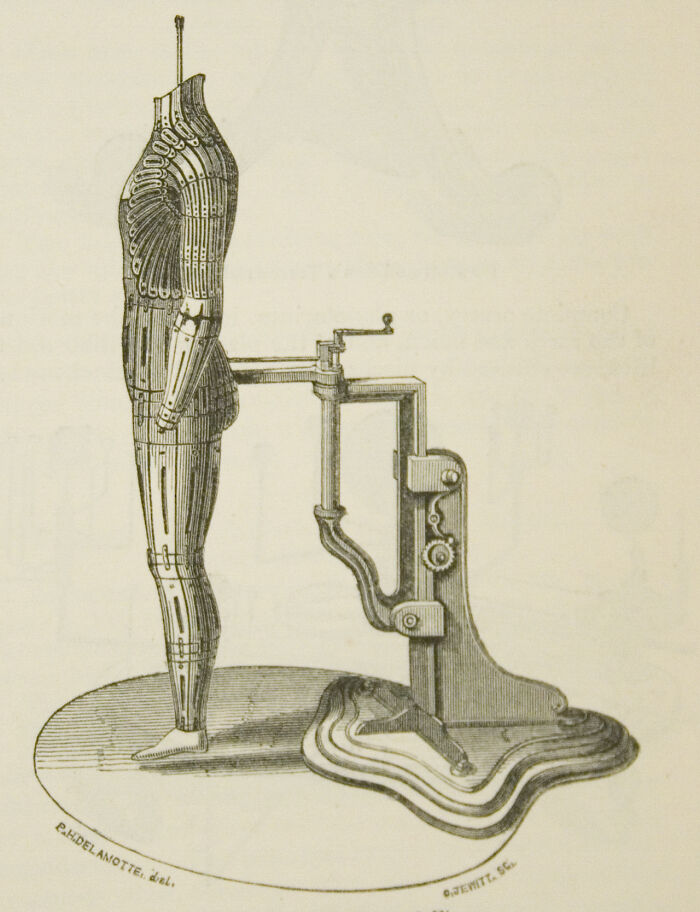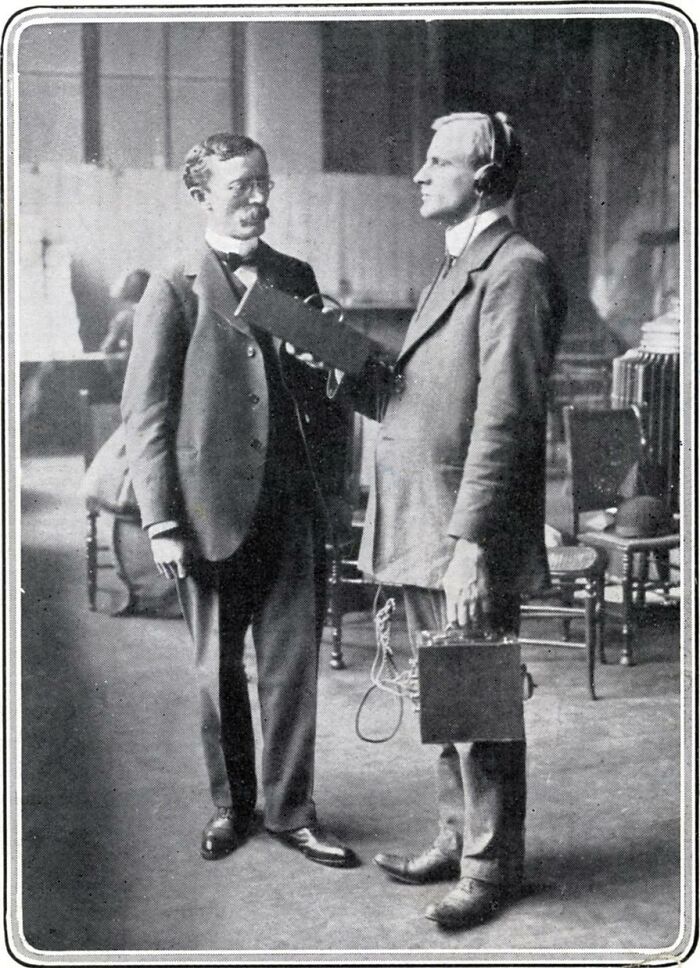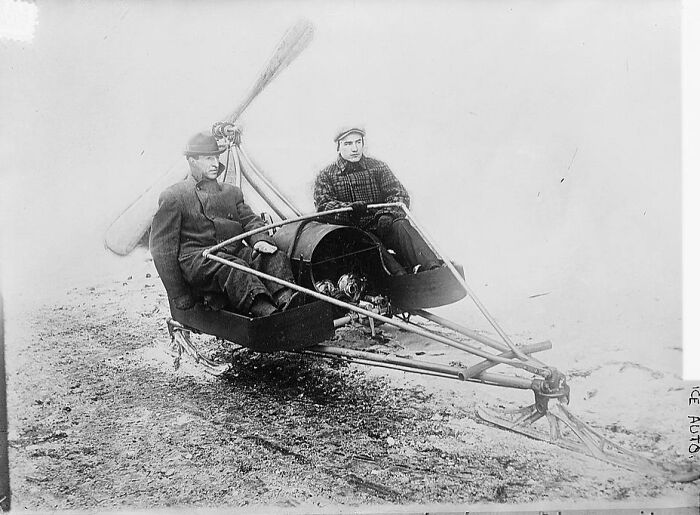An AI-powered toilet seat has been named by Time Magazine as one of the top 200 inventions of 2024. It optically scans a user’s stool and urine, to detect any concerning changes that might indicate a health problem. It can then send data and alerts directly to medical staff. Also on the list, a battery-powered life-size humanoid robot that showed off its prowess in a BMW factory, and helped to build cars.
They're both a far cry from the strange inventions from way back in the day. For example, a gas war resistant baby pram created in 1938. Or the wooden swimsuits that made their debut in the 1920s. The so-called "Spruce veneer bathing suits" were marketed as simple, cheap, easy to make, yet fashionable and modern. They were also meant to make swimming easier due to their buoyancy. But we can probably guess that comfort wasn't a big factor for those who tried them out.
Bored Panda took a trip down memory lane, in search of some of the weirdest inventions from days gone by. And what we found might surprise you. Keep scrolling for a fascinating look at what people thought they needed, and don't forget to upvote your favorites.
This post may include affiliate links.
Fold-Out Piano, Specially Designed For Bedridden Patients. Great Britain, 1935
Les Paul, Age 14, In 1929 - Yes, He Invented The Rack - That Type Of Harmonica Holder, Too
Folding Bridge For Emergencies, Invented By L. Deth. The Emergency Bridge Can Easily Be Transported On A Handcart. The Netherlands, Location Unknown, 1926
We’ve come a long way since humans started walking upright around 7 million years ago. You have the invention of stone tools in Ethiopia about 2.6 million years ago. The discovery of fire some years after. The creation of papyrus (ancient paper) in ancient Egypt and then soap a while later.
Many inventions have changed our lives for the better. Like the printing press, the wheel, electricity, the telephone, computers, the internet, cars, planes, and even space travel. But there have also been a few very questionable, and pretty useless, creations along the way.
In 1955, This Tiny Electric Narrow Gauge Train Was Installed In New York’s Holland Tunnel To Monitor Traffic Speed
A British Couple Sleeps Inside A "Morrison Shelter” Used As Protection From Collapsing Homes During The Wwii 'Blitz' Bombing Raids... March 1941
Jess Dixon In His Flying Automobile
Built by Jess Dixon of Andalusia, Ala. Can fly forward, backward or straight up or hover in the air. Runs on road or flys across country. 40 H.P. motor, air cooled, speeds to 100 m.p.h. Kobel Feature Photos, Frankfort, Ind.,1940
In 1975, a guy named Gary Dahl brought us something known as a pet rock. It was nothing more than a rock with two eyes, sold in a cardboard box and nestled on a bed of straw. Yet, it took the world by storm. Millions of people rushed out to get one. It came with an owner's manual and a 32-page instruction booklet on how to care for your new "pet".
It Was A Bit Different Back In The 60s
Hamblin Glasses. A Pair Of Spectacles Especially Designed For Reading In Bed. England, 1936
Gas War Resistant Pram. England, Hextable, 1938
“Your PET ROCK will be a devoted friend and companion for many years to come,” read the booklet, adding that “Rocks enjoy a rather long life span, so the two of you will never have to part –– at least not on your PET ROCK’s account. Once you have transcended the awkward training stage, your rock will mature into a faithful, obedient, loving pet with but one purpose in life –– to be at your side when you want it to, and to go lie down when you don’t.”
By the following February, Dahl had become a millionaire. He had sold over 1 million Pet Rocks for $3.95 each, proving that the world is indeed a very strange place.
Doctor Vilhelm Irgens Pettersson Demonstrates His New Invention; A Baby Carriage That Can Climb Stairs. 26 November 1956
This Is How Babies Used To Fly On Airplanes
Amphibious Bike 'The Cyclomer', A Bicycle That Can Ride On Land And Water With A Load Of Up To 120 Kilos, Paris, 1932
Oh really? If you want to impress me, let me see a photo of him riding this in water, I'm not confident
As if that wasn't weird enough, the 2000s saw the introduction of the USB Pet Rock. Again, nothing more than a rock. But this time, with an added addition of a USB cable that you could plug into your computer. And what did it do when plugged in? Absolutely nothing. Here is how one retailer advertised the "innovation":
"Simply plug the USB cable into a free port and let the fun begin. The USB Pet Rock will instantly begin to work its magic. People will stop by and ask you what your USB Pet Rock does. Each time, you can make up a new story. For no matter what you say, it will be greater than the truth - because these USB Pet Rocks don't do a dang thing. Except make you smile. And confuse your friends and coworkers, which will make you smile even more. So, get your USB Pet Rock today, and help make us rich tomorrow."
Electrically Heated Vest For The Traffic Police In The United States. The Power Is Generated Via Contact On The Street. Location Unknown, 1932
Plastic Face Protection From Snowstorms And Cold. Montreal, Canada, 1939
Love the looks on these ladies faces. "Isn't that Mrs Dunlittle?" "Ooo yes! Isnt she seeing that Eric?"
Car With Shovel For Pedestrians, Paris, 1924
Also in the 2000s, a man by the name of Mike Madden found himself facing a major dilemma ... Or so he believed. His two pet goldfish, Malcolm and Ethel, did nothing all day, but swim in circles in their bowl in the confines of Madden's home. Their owner worried they weren't going for "walks" and weren't seeing enough of the outside world. So, he devised a plan and invented a Goldfish Walker. We kid you not.
The Isolator, By Hugo Gernsback
A terrifying hood with an attached oxygen tank, for when you want to be really, really isolated. “Outside noises being eliminated, the worker can concentrate with ease upon the subject at hand.”
Slot Machine Selling Warm Sausage Rolls On A Railway Station In Germany. 1931
Seems like a pretty advanced vending machine, not a slot machine. Lol
Faxed Newspaper
In 1938 the first wireless newspaper was sent from the New York radio station WOR, which could be received in the living room. Photo: a number of children read the children's page of a radio newspaper from Missouri. National Archives / Spaarnestad Photo / Het Leven / Photographer unknown, SFA022813039
“If a fish is in a bowl on a shelf swimming in circles, it must get bored. I decided it would be fun to take it out with me down to the pub," said Madden, who was featured in several publications after being spotted "walking" his fish.
Madden later claimed that his one goldfish Malcolm lived to the ripe age of 11 years, because of his adventurous lifestyle, "which included trips to the pub and walks around town," reported The Mirror.
Kodak K-24 Camera, Used For Aerial Photography During Ww2 By The Americans
Portable Radio In A Straw Hat, Made By An American Inventor. United States Of America, Place Unknown, 1931
A French Soldier Wearing A Kind Of Armour As Protection Against Flying Bullets Above The Trench. First World War, France, 1915
Wooden Bathing Suits, Supposed To Make Swimming A Lot Easier. Haquian, Washington, United States, 1929
This is because the alternative is wool, which gets heavy when wet.
A Bicycle Tire Tied Around The Body As A Swimming Aid. Germany, 1925
A group of youngsters tied a bike tire around the body as a swimming aid. Germany, 1925.
Remote-Controlled Model Helicopter - Pennsylvania, April 16, 1941
Adjustable Mannequin
The fact that something invented over 150 years ago can still seem ingenious is impressive. This mannequin, which can adjust to be just about any size a human can be, is an example of such an invention. Although it does look a little funny, the real oddity of this device is that it hasn't gained popularity yet. from page 433 of Official Descriptive and Illustrated Catalogue of the Great Exhibition 1851, Volume 1. Printed in London in 1851 by Spicer Brothers, Wholesale Stationers, and W. Clowes and Sons, Printers. Call No.: 606 G786quarto V.1 Location: The George Peabody Library
The reason it wouldn't be popular now, is few people make their own clothes and need a mannequin that precise and few people make bespoke clothing either. With fast fashion in particular, everything is cut by machines or people in a rush who aren't taking as much care to fit a pattern, then it is sewn as the pieces lie. That's why the same t-shirt in the same marked size can actually be different to the one next to it. Few things are fitted on the form when sewn. Plus the cost of this will make it more than any home dressmaker will pay, I'm sure. The current adjustable dressmaker's mannequins do well enough for the demand.
Clap Skate
As early as 1936, R. Handl was working on a skate with a movable heel plate. However, it took until 1996 before such a system, called 'clap skate', revolutionised the sport of skating.
R. Handl, 23 October 1936

 Dark Mode
Dark Mode 

 No fees, cancel anytime
No fees, cancel anytime 






